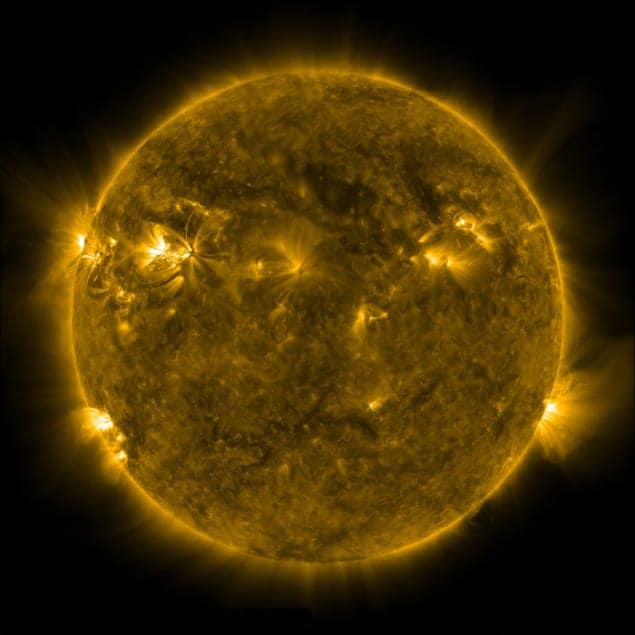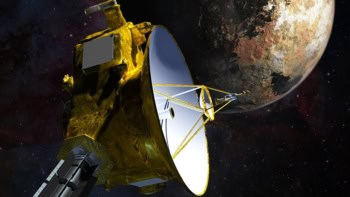
A new study sheds fresh light on the Sun, potentially explaining how vast amounts of energy are transferred from its surface to its outer atmosphere, the corona. The findings could also help to explain the origins of the solar wind, which bombards the rest of the solar system with streams of charged particles.
The corona is a region of ionized gas that extends millions of kilometres from the surface of the Sun into space. Physicists have known for more than half a century that it has a temperature of several million kelvin, while the solar surface is a relatively mild 6000 K. This surprising feature of the Sun has challenged astrophysicists, who are yet to observe directly the mechanism by which the corona is heated.
One favoured candidate for coronal heating is a phenomenon known as Alfvénic waves. These torsional transverse magnetic oscillations are believed to propagate at very high speeds. They pass along the magnetic field lines that run out of the surface of the Sun and into the corona. The phenomenon was proposed by Hannes Alfvén who won the 1970 Nobel Prize for Physics for his pioneering work on magnetohydrodynamics.
Difficult to spot
But Alfvénic waves have proved very difficult to observe. It was not until 2007 that data from Japan’s Hinode mission led to the first detection of Alfvénic waves in the corona. However, the waves that were observed were sporadic and not of sufficient energy to account for the coronal heating.
Now, four years later, a group of researchers based in the US and Europe is reporting that it has finally seen an abundance of Alfvénic waves in the corona. The new results emerged from the analysis of images collected by NASA’s Solar Dynamics Observatory (SDO), which was launched in 2007. The research team, led by Scott McIntosh of the National Center for Atmospheric Research in Boulder, Colorado, used the Atmospheric Imaging Assembly (AIA) aboard the SDO.
McIntosh’s team was looking for fluctuations in features known as “spicules”, which are short-lived jets of hot gas that shoot into the corona at more than 100,000 km per hour from the chromosphere below. The researchers spotted waves at extreme ultraviolet (EUV) and X-ray wavelengths that are more than 100 times more intense than those previously measured. This, the researchers claim, is enough to heat the Sun’s outer atmosphere by millions of degrees and drive the solar wind.
Like “twanging a string”
“I would describe an Alfvén wave as simply the twanging of a string, where the motion of the gas provides the tweak and the magnetic field line is the string,” McIntosh told physicsworld.com. He said that the “incredible” spatial and temporal resolutions of the AIA instrument have enabled his group to make this breakthrough now.
McIntosh, who was involved in both the 2007 study and the recent work, will now develop the research by considering how these Alfvénic waves transfer their energy to gas in the corona. To do this, his group will need to develop computer models that are detailed enough to capture the interactions between waves and spicules.
Peter Cargill, a space and atmospheric physics researcher at Imperial College, London, welcomes the new results. “Potentially, this is a huge change into how researchers tackle the heating of the corona,” he says. Cargill believes that models will need to consider how Alfvénic waves are damped within the corona. “That needs people to get away from simple models and deal with the complexity that you see in every movie of the corona from SDO,” he adds.
This latest research is described in a paper in this week’s Nature.




